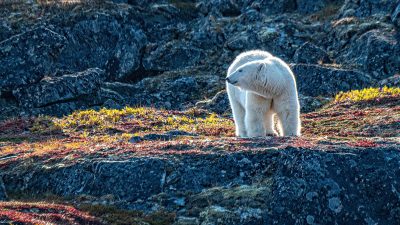Greenland is a place full of stark, icy landscapes and quaint, colourful towns showing the influence of Denmark's colonial presence. It's picturesque in the extreme, but something sinister lurks beneath the surface of Greenland's massive ice cap.
At the height of the Cold War, the United States of America (an ally of Denmark) thought this vast, peaceful, and largely uninhabited colony would be the perfect place to hide nuclear weapons facilities. The American plan, nicknamed Project Iceworm, called for hundreds of kilometres of tunnels, housing enough nuclear missiles to blow any potential adversary away.
What they actually built beneath the ice of northwestern Greenland was an experiment in living, called Camp Century. Camp Century was practically a city within a glacier. It housed 200 U.S. soldiers and had its own theater, shop, and chapel, all powered by a nuclear reactor.
Building Camp Century was no easy feat. Roughly 1,200 kilometres from the North Pole, temperatures were frequently below -30 Celsius, with winds reaching up to 100 kilometres an hour. The U.S. Army hoped eventually to expand the facility and add their nuclear missiles. But first the site was monitored to see how soldiers fared in extreme conditions and whether the facility under the ice could in fact house weapons of mass destruction.
It's a good thing they held off on bringing in any weapons to Greenland. Due to movements of the ice cap, the ceiling of the reactor room in Camp Century had dropped by nearly two metres by 1962. Realizing conditions within the glacial ice would be too unpredictable for a nuclear launch facility, the U.S. Army began operating Camp Century in summer only, as of 1963, shutting down and removing the nuclear reactor.
By 1966, they had abandoned Camp Century altogether. They literally just left—leaving everything they had put in place behind them. The assumption was that the cold temperatures of the Greenland ice cap would safely entomb everything forever.
But temperatures are warming. The Greenland ice cap is melting at a rapid rate. And some experts say that by 2090, Camp Century may be exposed by melting ice and what was left behind could be extremely dangerous.
The infrastructure of the Cold War era ice camp might be a fascinating find, but whatever other waste was left behind—biological, chemical, or nuclear—could prove deadly. Just one more in a long list of reasons why today's great battle should be a global effort to reduce the worst effects of climate change.














